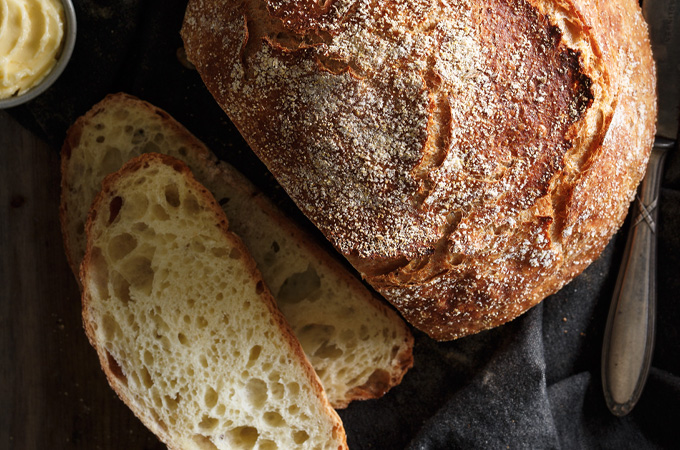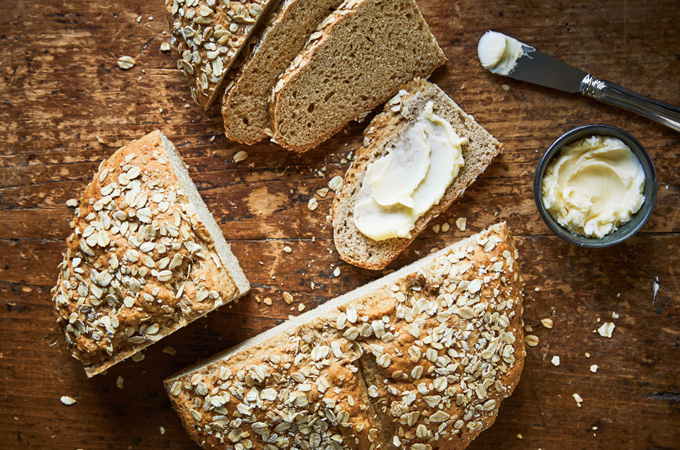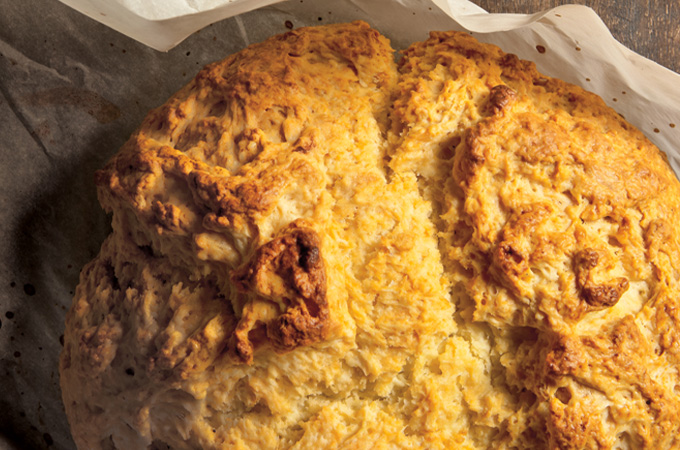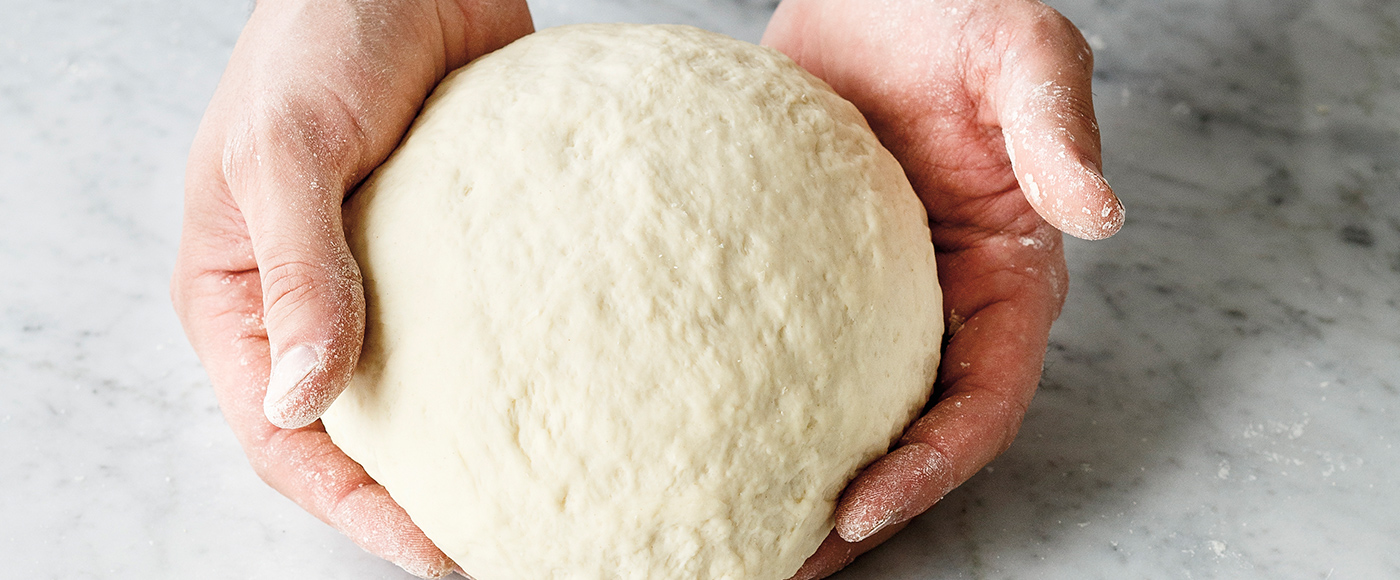Baker’s yeast is a microscopic fungus that transforms a part of the starch found in flour into carbon dioxide (CO2), a gas that helps bread rise. This fermentation reaction also produces alcohol (which evaporates during cooking) and a slew of other compounds that give bread its beloved aroma. Some yeasts react slowly, while others react quickly. People normally tend to buy dry yeast, but it is also possible to procure fresh yeast.

Theme
Breadmaking Made Easy
Different types of yeast
Active fresh yeast
Fresh yeast is sold in blocks or small cubes in fine grocery stores or artisanal bakeries. It almost resembles brittle modelling clay. This perishable product must be kept in the fridge and used within days of purchase. Fresh yeast can also be frozen for about six months in an airtight container. When using it, some bakers crumble it directly into flour, while others prefer to soften it in warm water first. 20 g of fresh yeast is the equivalent of an 8 g (2 tsp/10 ml) packet of dry yeast.
Active dry yeast
It consists of dehydrated yeast formed into tiny beads. It needs to be rehydrated in warm water (38-43°C/100-110°F) with a bit of sugar before being added to any recipe (read the instructions on the packet). The water’s temperature isn’t a suggestion; too-hot water will kill the yeast, and too-cold water could damage it. Don’t have a thermometer? Use your pinky finger: The water has to be just slightly hotter than your body’s temperature. Dough with a traditional yeast base requires one or two proofs of 45 to 60 minutes at room temperature.
Dry quick-rise (instant) yeast
This yeast is to baking what F1 race cars are to the world of cars: It’s made to go fast! Its granulation is much finer than traditional yeast, which allows it to be added directly to flour without rehydration. Dough with a quick-rise yeast base requires one or two proofs of 30 minutes. You can also leave it overnight in the refrigerator.
Dry yeast for baking bread
It consists of a quick-rise yeast that can be added directly to the flour. It is technically identical to instant yeast, but is sold in a 113 g jar.
Yeast for pizza
This quick-rise (instant) yeast contains cysteine, an amino acid that helps pizza dough stretch out more easily. Like all instant yeasts, it can be added directly to flour.
Can yeasts be used interchangeably?
Yes! Despite small differences (like the presence of vitamin C in instant yeast and cysteine in pizza yeast), dry yeasts are interchangeable, volume for volume, without any adjustments. The fermentation period can take more or less time depending on the yeast used, but in any case, you should always rely on the look of your dough, which should normally double in volume before baking.
Here’s how to do it:
How to replace instant (quick-rise) yeast with traditional (active dry) yeast: Take ¼ cup (60 ml) of the liquid already intended for the recipe. The liquid must be warm (approx. 38-43°C/100-110°F). Add 1 tsp (5 ml) of sugar or honey, as well as the yeast. Mix and let rest for 5 minutes. Add this mixture to the flour along with the rest of the liquid required for the recipe.
How to replace traditional yeast with instant yeast: Rehydrate the instant yeast as if it were active dry yeast.
Weight and volume equivalences: Dry yeast is sold in 8 g packets or 113 g jars. An 8 g (2 tsp/10 ml) packet of dry yeast is the equivalent of 20 g of fresh yeast.
How to store dry yeast
Dry yeast can be stored for up to a year at room temperature, as long as the packaging hasn’t been tampered with and you use it before the best by date. Once opened, store it in the refrigerator. You can also freeze it for up to a year in an airtight container. If you’re unsure whether your yeast is still alive, all you need to do is test it.
Testing your yeast
Dissolve 1 tsp (5 ml) of sugar in ¼ cup (60 ml) of warm water (38-43°C/100-110°F). Add 1 tsp (5 ml) of the yeast, stir and let stand for about 10 minutes. If the mixture doubles in volume and bubbles lightly, it means the yeast is still alive.
Soda bread: a bread without yeast
Soda bread is a type of bread of Irish origin that relies on the addition of baking soda (a chemical leavening agent) and buttermilk to rise. The baking soda reacts immediately with the acids found in the buttermilk, producing the carbon dioxide necessary to help the bread rise. It’s a type of quick bread, much like banana bread. It’s easy to make, and also a great way to make bread if you’re out of baker’s yeast at home.

savoury breads
Spelt Irish Soda Bread

savoury breads
Soda Bread
Yeast vs. sourdough starter
Sourdough starter is a natural source of yeast and bacteria that can replace store-bought yeast. To make it, prepare a mixture of flour and water and let it rest at room temperature. After 3 or 4 days, the mixture will start to bubble and will release a yeasty scent, signs that the yeast naturally present in the flour has started to multiply and ferment. At this stage, you must feed your starter with flour and water daily for 7 to 10 days before it will be ready to use. Then store your sourdough starter in the fridge and continue to feed it once a week with a bit of flour and water to ensure it stays alive.
Here’s a product to help you in the kitchen:


